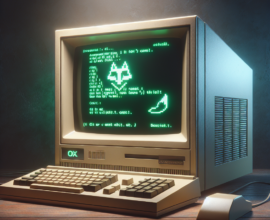Linux is an open-source, modular, multi-tasking, monolithic operating system. Just like Microsoft Windows and Macintosh, Linux is an operating system based on the Linux kernel which was first released on 17th September 1991. It is a Unix-like operating system that directly manages the computer system’s hardware and resources which may include CPU, storage, memory and much more. Linux in the year 1991 was originally developed with the motive of working for personal computers that were based on the Intel x86 architecture, but with time has since been produced for many other platforms than the normal operating system. Android which has the greatest dominance in the smartphone industry is also based on Linux which makes it the base with the largest installed platforms of all the open-source, general-purpose operating systems.
In the desktop market, the Linux operating system isn’t that popular but the Chromebook is the one that runs on the Linux kernel-related Chrome OS. In the US this dominates the education market and is also the only operating system that runs on the top 500 supercomputers. Linux is also running on the systems which are embedded i.e., the systems in which the operating system is built typically into the firmware and then is then tailored into the system. This list comprises automation controls, routers, televisions, smart home technologies, smartwatches, expensive automobiles, video game consoles, digital video recorders and all other devices which are based on the embedded system firmware. The source code of the Linux operating system may be used, modified or even distributed by anyone under the terms of its respective licenses. Linux other than powering supercomputers is also responsible for powering around 90% of the cloud infrastructure which includes the cloud providers. Also, as Android is Linux kernel-based, it gives Linux around 74% of the world’s smartphone stake in its hands.
The Linux operating system is an interconnection between the applications and the hardware and is responsible for making connections between the software and the physical resources that they work with. Linux during its earlier stages was designed with a mindset of making it similar to UNIX, but with time has evolved so much that it now runs on a wide range of hardware ranging from smartphones to supercomputers. Every Linux-based operating system is based on the Linux kernel which is responsible for managing the hardware resources and components and also for managing a set of software packages that make up the other parts of the Linux operating system.
The Linux operating system includes many common core components like the GNU tools and then these tools are the one that gives the user a perspective to manage all the resources and the component functions provided by the Linux kernel. Also, these tools give a way for the user to install additional software packages, configure the system performance and the security settings of the system and much more. All of these tools together when bundled and made to sync with each other are what make up the entire functional operating system. Linux is an open-source, monolithic operating system, the combinations of the software differ for different Linux distributions.
Linux being an open-source and free operating system can be run by anyone and can be studied, and modified and even the distribution of the source code is possible. It even is possible for anyone to sell copies of the modified code of the operating system by just following the terms and conditions and by doing so under the same license. Linux is itself the only open-source software that has garnered so much popularity in the operating system world. Many experts contribute to developing the Linux kernel by adding new features, finding and fixing bugs and errors eliminating any security flaw in the system and much more. Anyone around the world is allowed to share their ideas relating to the Linux kernel and can modify, study, and run the Linux kernel all by sharing their contributions to the Linux community.
Linux components
The Linux operating system has been around since the early 90s and since has made quite a big fan base of itself. From smartphones to supercomputers, automobiles to home desktops to enterprise servers and much more all revolving around the Linux operating system. This all is made possible because Linux is the most reliable, secure, open-source, free and carefree operating system available which by choice has become the most popular running platform on desktops, servers and embedded systems. The Linux operating system comprises of several components, out of which some are listed below: –
- Kernel
The Linux kernel can be designated to be the heart of the system. It basically is the core of the system that is responsible for managing the CPU, memory, storage and all other peripheral devices. This kernel is the lowest level of the operating system. - Bootloader
The bootloader is the software that is responsible for managing the boot process of the computer. This eventually looks like a splash screen that pops up and then goes away eventually to boot into the operating system of the device. - Graphical server
This is a system that displays the graphics on the computer screen which commonly is referred to as the X server or the X itself. - Daemons
All the background services which may include the printing, scheduling the sound processing, etc. are the ones that may actually start up during the boot process or after the user logs into the system. This actually is referred to as the daemons. - Init system
The system that is responsible for bootstrapping the user space and then charging it with the control daemons. It actually is the Init system that manages the boot process once the initial booting of the system is handed over from the bootloader. - Desktop environment
This is actually the environment that the user actually interacts with. There are many desktop environments available like GNOME, Cinnamon, Mate, Pantheon, KDE, Enlightenment, etc. All these desktop environments include built-in applications such as games, web browsers, configuration tools, file managers, etc. - Applications
Desktop environments are not possibly offering the full array of applications due to which thousands of quality software titles are made use of that can be easily discovered and then installed. Most of the modern Linux-based devices include App Store-like apps that make the application installation quite easy.
There is a lot more to know about the Linux operating system. If you are one of the technology freaks and want to explore more about the Linux operating system, then log into the DockLearn website and improve your knowledge and insight about the Linux operating system.






You’re in point of fact a good webmaster. This site loading velocity is incredible.
It seems that you’re doing any unique trick. Furthermore, the contents are masterpiece.
you have performed a great process in this matter!